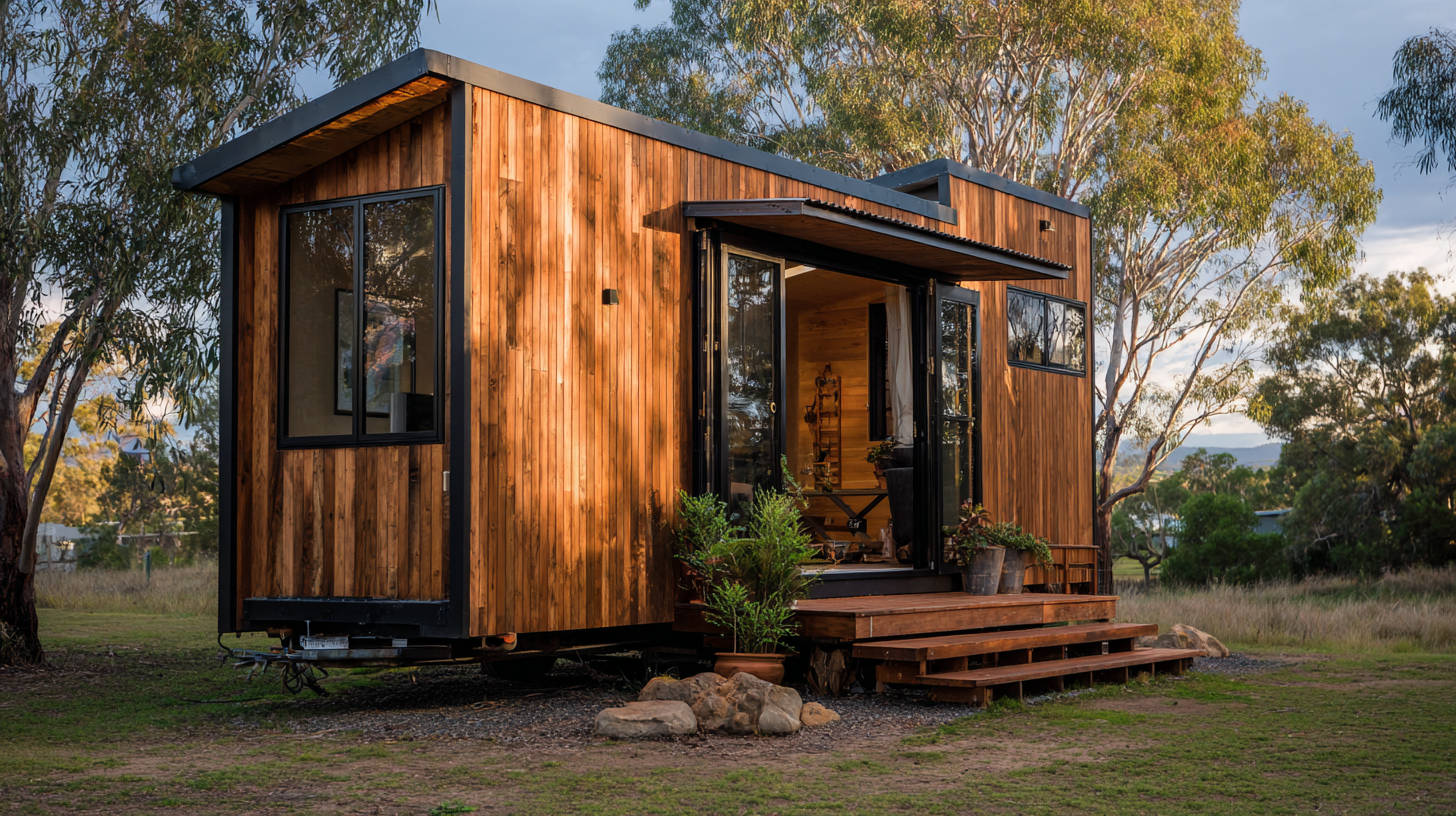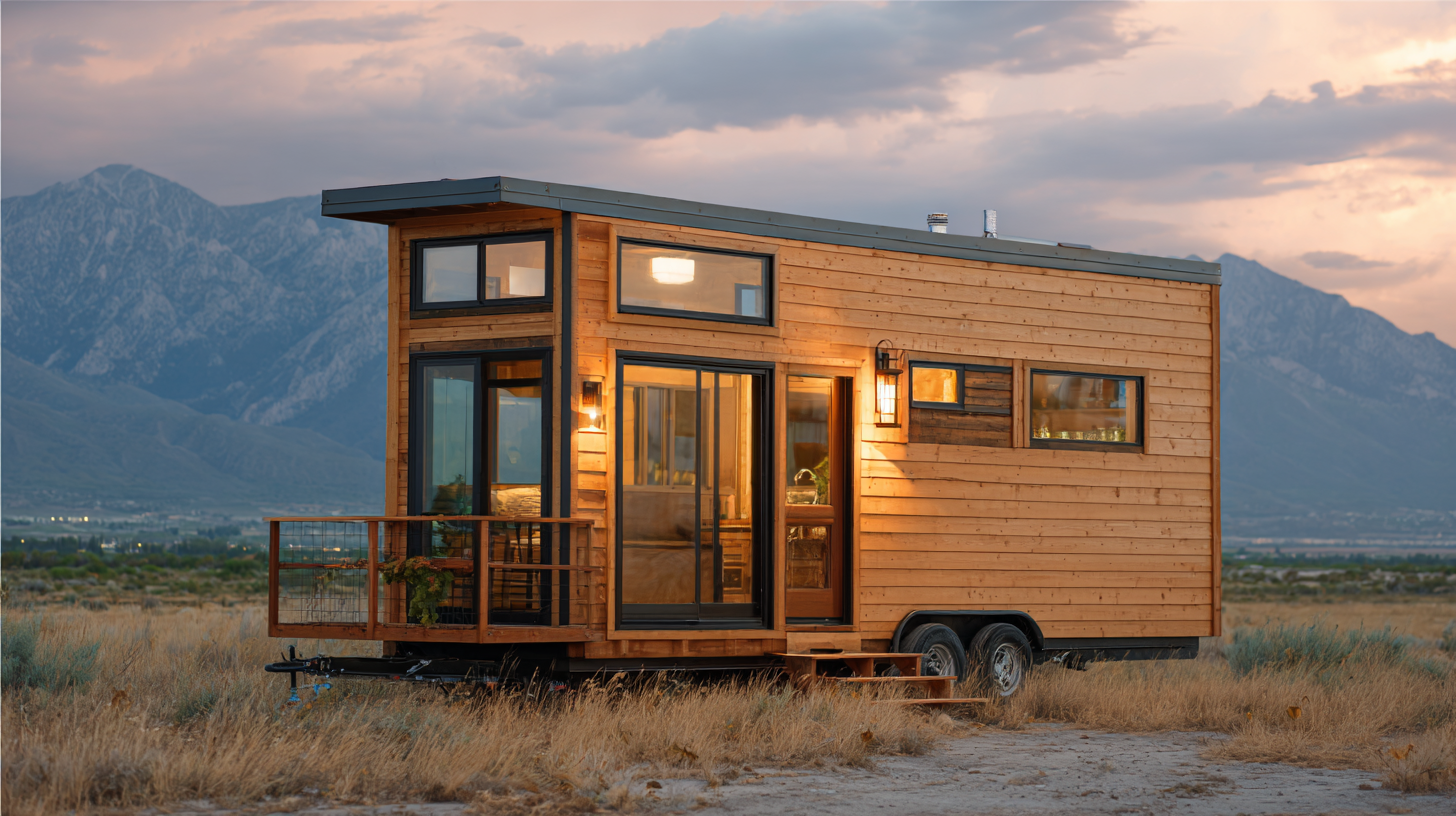Discover the Freedom of Living Light with Portable Tiny Homes
As the movement towards minimalism and sustainable living gains momentum, portable tiny homes have emerged as a transformative solution for individuals seeking freedom from the constraints of traditional housing. According to a recent report by the Tiny House Industry Association, approximately 68% of tiny home owners express higher levels of happiness and satisfaction compared to their previous living situations, highlighting the psychological benefits of downsizing. Furthermore, with the average cost of a new home exceeding $300,000, many are opting for portable tiny homes as an affordable alternative, with prices ranging from $20,000 to $60,000. This significant cost reduction not only enables homeownership but also promotes a lifestyle that prioritizes experiences over possessions. By embracing smaller living spaces, individuals can reduce their environmental footprint and enjoy greater mobility, ultimately discovering the freedom that comes with living light.

Benefits of Choosing Portable Tiny Homes for Freedom and Flexibility
Portable tiny homes offer remarkable benefits that enhance freedom and flexibility for modern living. These compact spaces free individuals from the constraints of traditional housing, allowing people to explore new locations without sacrificing comfort. With a portable tiny home, you can easily relocate to a scenic beach, a tranquil forest, or any destination that suits your lifestyle. This mobility fosters a sense of adventure and personal growth that is often lost in the routines of conventional living.
**Tip:** When considering a portable tiny home, prioritize essential features that maximize space and functionality. Look for designs that incorporate multi-purpose furniture, allowing for versatility without compromising style.
Moreover, the environmental impact of tiny homes cannot be overlooked. They generally require fewer resources for construction and maintenance, leading to a reduced carbon footprint. Living in a smaller space encourages minimalism and sustainable living, promoting a lifestyle that values experiences over possessions.
**Tip:** To embrace the tiny home lifestyle fully, engage in decluttering exercises to cherish experiences and prioritize needs over wants. This practice not only enhances your living space but also your overall well-being.
Innovative Design Features of Modern Tiny Homes for Comfortable Living
Modern tiny homes have revolutionized the concept of comfortable living by incorporating innovative design features that maximize space and functionality. One significant aspect is the open floor plan, which creates a sense of spaciousness within small footprints. This design choice allows inhabitants to utilize every square inch efficiently, encouraging multipurpose furniture that serves various needs. From foldable tables to lofted beds, these versatile solutions enable homeowners to adapt their living spaces according to their daily activities and personal preferences.
Another remarkable feature of contemporary tiny homes is the integration of sustainable materials and technologies. Many tiny homes are designed with energy efficiency in mind, incorporating solar panels, rainwater harvesting systems, and high-quality insulation. These elements not only reduce the environmental impact but also enhance the overall comfort of living. Furthermore, large windows and skylights are often utilized to bring in natural light, creating an inviting ambiance and a connection to the outdoors. By merging innovative design with eco-friendly practices, modern tiny homes present a new way of living that champions both comfort and sustainability.

Sustainable Living Solutions: How Tiny Homes Reduce Your Carbon Footprint
The rise of portable tiny homes is revolutionizing the concept of sustainable living. These compact dwellings are not just a trend; they offer a viable solution to the pressing issue of climate change. By significantly reducing the amount of material needed for construction and efficiently utilizing space, tiny homes minimize waste. Their smaller size also means lower energy consumption, as heating and cooling extremely reduced square footage requires less energy, directly contributing to a smaller carbon footprint.
Moreover, tiny homes often embrace eco-friendly materials and innovative designs that promote sustainability. Many are equipped with renewable energy sources such as solar panels, further diminishing their reliance on non-renewable energy resources. Additionally, the lifestyle that accompanies living in a tiny home encourages minimalism, leading to less consumerism and a more intentional way of life. By choosing a portable tiny home, individuals can align their living choices with their environmental values, making a profound impact on the planet while enjoying the freedom of a simpler, more mobile lifestyle.
Carbon Footprint Reduction by Tiny Homes Compared to Traditional Homes
Adapting Tiny Homes for Various Lifestyles and Locations
The tiny home movement has emerged as a flexible solution to modern living, accommodating various lifestyles and preferences. According to a 2022 report by the American Institute of Architects, approximately 33% of Americans express a desire to live in a smaller home, highlighting a growing trend towards minimalism and efficiency. Portable tiny homes exemplify this shift, allowing individuals to adapt their living spaces to suit unique needs, whether for full-time residency, vacation retreats, or even mobile work environments.
Adapting tiny homes for different locations further enhances their appeal. Research by the Small House Society indicates that tiny homes can be installed in diverse settings—from urban backyards to rural landscapes—without necessitating extensive land use. This adaptability not only supports sustainable living practices, reducing land consumption, but also caters to those seeking to downsize without sacrificing comfort. Some manufacturers now offer customizable designs, making it possible to integrate solar energy systems and eco-friendly materials to meet the demands of various climates and lifestyles. The versatility of portable tiny homes signifies a shift towards a more liberated and personalized approach to living.
Discover the Freedom of Living Light with Portable Tiny Homes
| Feature | Description | Ideal For | Location Adaptability | Size (sq ft) |
|---|---|---|---|---|
| Mobility | Easily transportable, can be relocated without hassle | Travelers, digital nomads | Urban settings, countryside, or off-grid locations | 100-400 |
| Sustainability | Built with eco-friendly materials | Eco-conscious individuals | Rural areas, sustainable communities | 200-600 |
| Affordability | Lower cost compared to traditional homes | First-time home buyers, small families | Suburban areas, affordable housing initiatives | 150-350 |
| Customization | Options to personalize layout and features | Individuals seeking unique living spaces | Any location based on zoning regulations | 120-500 |
| Community Living | Often part of tiny home communities | People seeking community engagement | Shared properties and sustainable communities | 150-400 |
Tips for Successfully Making the Transition to Tiny Home Living
The tiny home movement continues to gain momentum, offering a unique solution for those seeking simpler, more affordable living options. With innovative designs and sustainable building practices, portable tiny homes allow individuals and families to embrace a minimalist lifestyle without compromising comfort. The surge in popularity of these small dwellings can be attributed to their ability to adapt to various needs, whether it's for downsizers, young professionals, or those facing housing challenges.
Making the transition to tiny home living requires thoughtful planning and consideration. To successfully navigate this shift, one should focus on decluttering possessions and maximizing space efficiency. Prioritizing essential features, such as multifunctional furniture and smart storage solutions, can dramatically enhance the livability of a tiny home. Additionally, understanding local zoning laws and building regulations is crucial in ensuring that your tiny home project adheres to legal requirements while remaining a cozy haven. As more people discover the freedom of living light, the tiny home community continues to expand, inviting newcomers to experience the joys of simplifying life.

